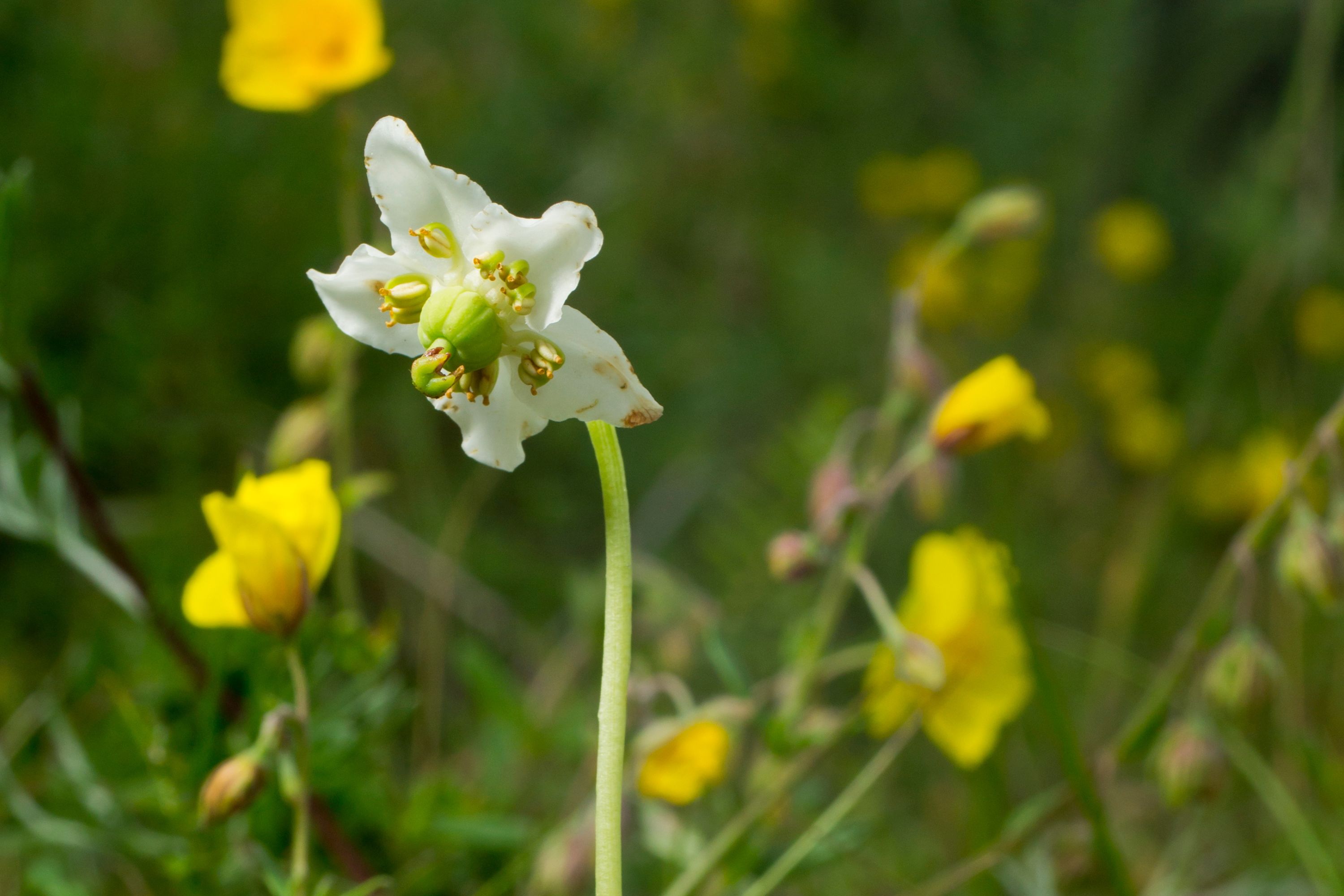Watermelon berry
(Moneses uniflora)

Description
Moneses uniflora is a species of Magnoliopsida first described by Carl von Linné, and given the simplified Asian name by Asa Gray. Moneses uniflora belongs to the genus Moneses, and the family Ericaceae. None of these subspecies are listed. Moneses uniflora, the one-flowered wintergreen (British Isles), single delight, wax-flower, shy maiden, star of Bethlehem (Aleutians), St. Olaf's candlestick (Norway), wood nymph, or frog's reading lamp, is a plant of the family of Ericaceae, that is indigenous to moist coniferous forests in temperate regions of the Northern Hemisphere from Spain to Japan and across North America. It is the sole member of genus Moneses. The genus Moneses originates from the Greek work moses, which translates to 'solitary,' and hesia, meaning 'delight,' referencing the single flower which blooms on the plant. The plant is also referred to as wood nymph, referencing a nature goddess figure in Greek mythology that lived in forests and resembled beautiful women. Moneses uniflora is a small plant, typically no taller than 10 cm tall. A perennial herb with a slender rhizome, the leaves are basal or low, oval-elliptic to obovate, from 10 to 30 mm in diameter, with small teeth. The petiole is shorter than the leaf diameter. Each stem terminates in a nodding, fragrant flower on a stem from 30 to 170 mm high. The corolla has a diameter of 15 to 25 mm. The spreading five white petals are slightly rumpled and are said to resemble an open white umbrella.The sepals are oval, separate and white-greenish. The flower has ten anthers, a noticeable style, and a distinctive five-pronged stigma.Flowering occurs from May to October. Moneses uniflora has floral features (like poricidal anthers and small apical pores) consistent with flowers that reproduce through buzz pollination.The single delight's nodding flower and anther's small apical pores allow for bees in flight to sonicate mid-flight, releasing and transferring pollen between flowers. Although attractive to bees, the flower produces no nectar, and reproduces through seed. The plant grows in moist forest environments in the holartic realm and is commonly found across North America and Eurasia.The plant flourishes in coniferous forest conditions in cooler temperatures, and is often found growing on moss and rotting plant material.
Taxonomic tree:







